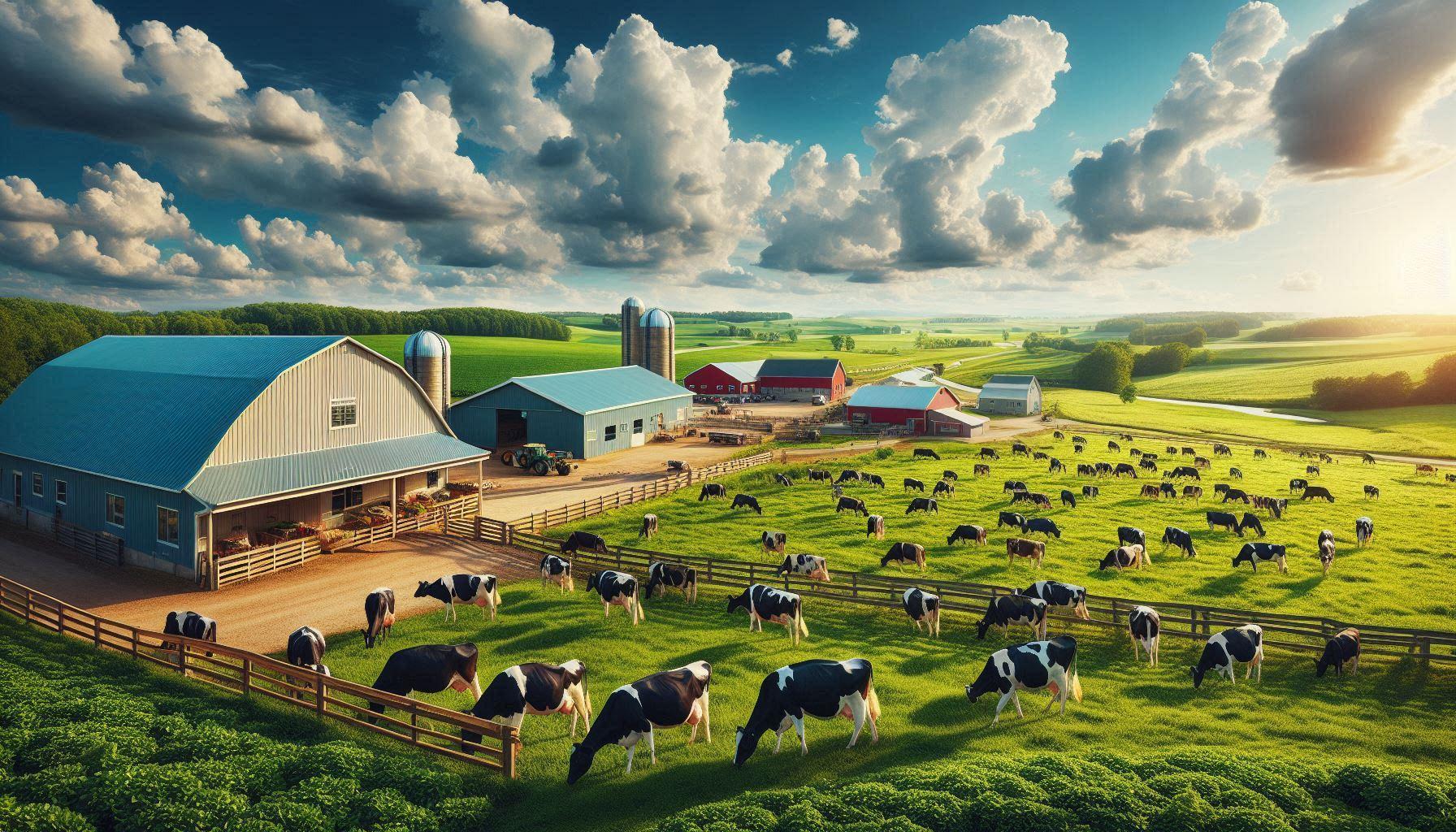The United States is home to some of the largest and most productive dairy farms in the world. These big dairy farms in the USA play a crucial role in meeting the nation's demand for milk, cheese, yogurt, and other dairy products. With advanced farming techniques, cutting-edge technology, and large-scale operations, these farms ensure efficiency, sustainability, and high-quality dairy production.
In this article, we’ll explore the biggest dairy farms in the USA, their impact on the dairy industry, key challenges they face, and the future of large-scale dairy farming.
1. The Largest Dairy Farms in the USA
The U.S. dairy industry is dominated by several massive farms that produce millions of gallons of milk annually. Here are some of the biggest dairy farms in the country:
A. Fair Oaks Farms (Indiana)
One of the most well-known dairy farms in the U.S., Fair Oaks Farms spans over 30,000 acres and houses more than 30,000 cows. It is a leader in sustainable farming practices and agritourism, offering educational tours to the public.
B. Riverview LLP (Multiple States)
Riverview operates large dairy farms across Minnesota, South Dakota, Nebraska, and Colorado. With tens of thousands of cows, Riverview focuses on efficiency, technology, and environmental sustainability.
C. Threemile Canyon Farms (Oregon)
This Oregon-based farm is one of the largest dairy operations in the Pacific Northwest, with around 70,000 cows. Threemile Canyon is known for its innovative waste-to-energy programs and sustainable farming methods.
D. DeJager Farms (California)
California is the top milk-producing state in the U.S., and DeJager Farms is one of its biggest players. With thousands of cows, this farm supplies milk to major dairy processors nationwide.
E. Cottonwood Dairy (South Dakota)
Cottonwood Dairy is one of the largest family-owned dairy farms in the U.S., with over 10,000 cows. It emphasizes animal welfare and high-tech milking systems.
2. How Big Dairy Farms Operate
Large-scale dairy farming requires advanced technology, efficient management, and sustainable practices. Here’s how these farms operate:
A. High-Tech Milking Systems
Most big dairy farms use automated milking parlors, such as rotary milking systems, which can milk hundreds of cows per hour. Robotic milkers are also becoming popular, reducing labor costs and improving efficiency.
B. Feed Management
Nutrition is critical for milk production. Large farms often grow their own feed (corn, alfalfa, and soybeans) to ensure quality and reduce costs. Some also use precision feeding techniques to optimize cow diets.
C. Waste Management and Sustainability
Dairy farms generate significant manure, which can be an environmental concern. Many large farms use anaerobic digesters to convert waste into biogas (renewable energy). Others process manure into fertilizer for crops.
D. Animal Welfare Practices
Big dairy farms follow strict animal welfare guidelines, including comfortable bedding, proper ventilation, and veterinary care. Many participate in programs like the National Dairy FARM Program to ensure ethical practices.
Also checkout more game:big dairy farms in usa
3. Economic Impact of Big Dairy Farms in the USA
The dairy industry contributes significantly to the U.S. economy:
-
Employment: Large dairy farms create thousands of jobs, from farm workers to veterinarians and logistics personnel.
-
Exports: The U.S. is a leading dairy exporter, shipping cheese, milk powder, and whey to countries like Mexico, Canada, and China.
-
Local Economies: Dairy farms support rural communities by purchasing equipment, feed, and services from local businesses.
4. Challenges Facing Big Dairy Farms
Despite their success, large dairy farms face several challenges:
A. Environmental Concerns
Manure runoff and methane emissions are major issues. Farms must comply with EPA regulations and adopt eco-friendly practices.
B. Fluctuating Milk Prices
Dairy prices are volatile due to supply-demand imbalances, trade policies, and feed costs. Many farms rely on government subsidies to stay profitable.
C. Labor Shortages
Finding skilled workers for large dairy operations is difficult. Some farms are turning to automation to address this issue.
D. Animal Rights and Consumer Preferences
Growing demand for plant-based milk (almond, soy, oat) has impacted dairy sales. Farms must adapt by offering organic or A2 milk options.
5. The Future of Big Dairy Farms in the USA
The dairy industry is evolving with new trends:
-
Robotics & AI: More farms are using AI-powered systems to monitor cow health and optimize milk production.
-
Sustainable Practices: Renewable energy, water recycling, and carbon-neutral initiatives will shape the future of dairy farming.
-
Alternative Dairy Products: Some big farms are diversifying into plant-based or lab-grown dairy to meet changing consumer demands.
Conclusion
Big dairy farms in the USA are essential to the nation’s food supply, economy, and agricultural innovation. While they face challenges like environmental regulations and shifting consumer preferences, big farm their adoption of technology and sustainability practices ensures their continued growth.
